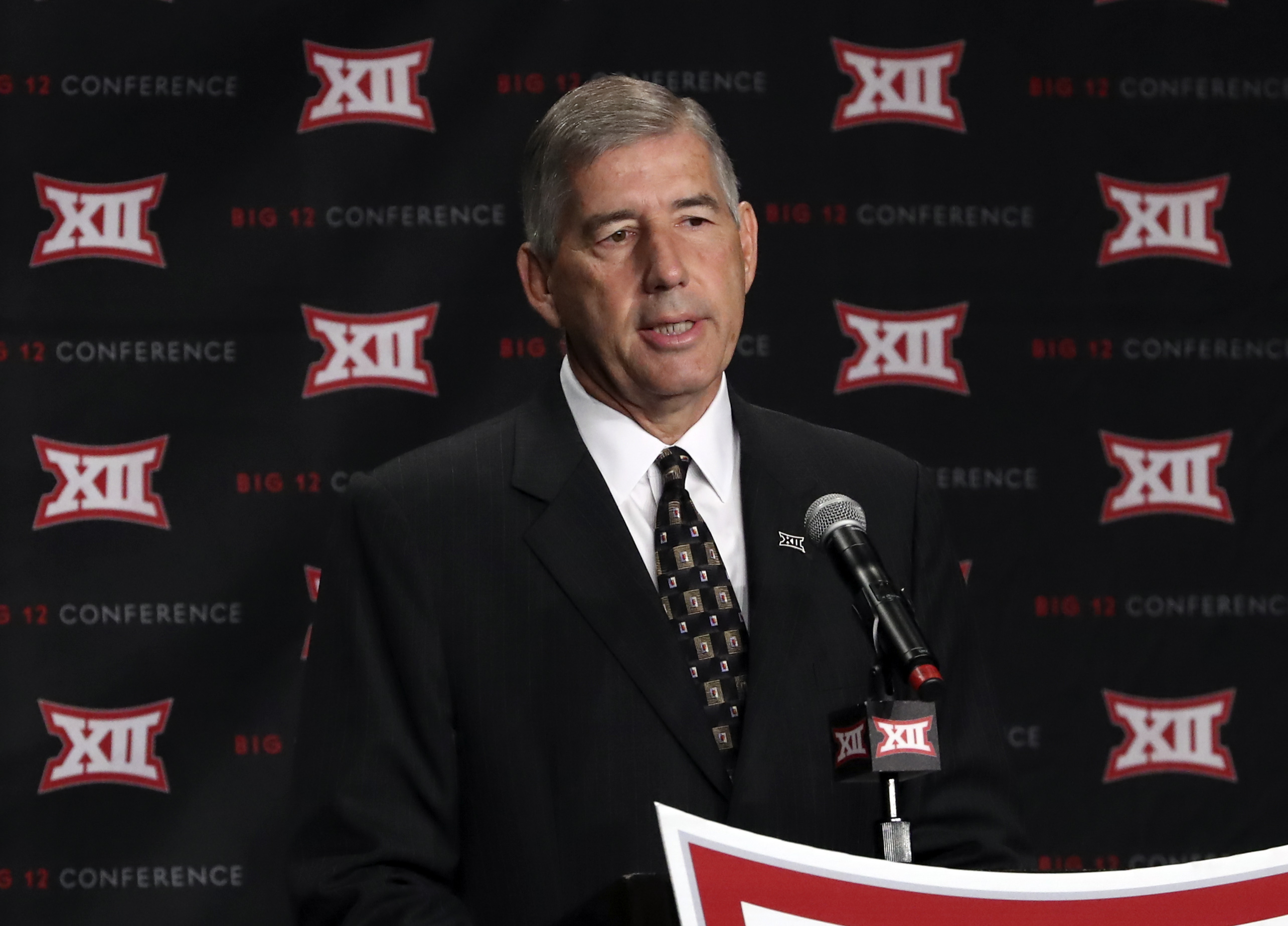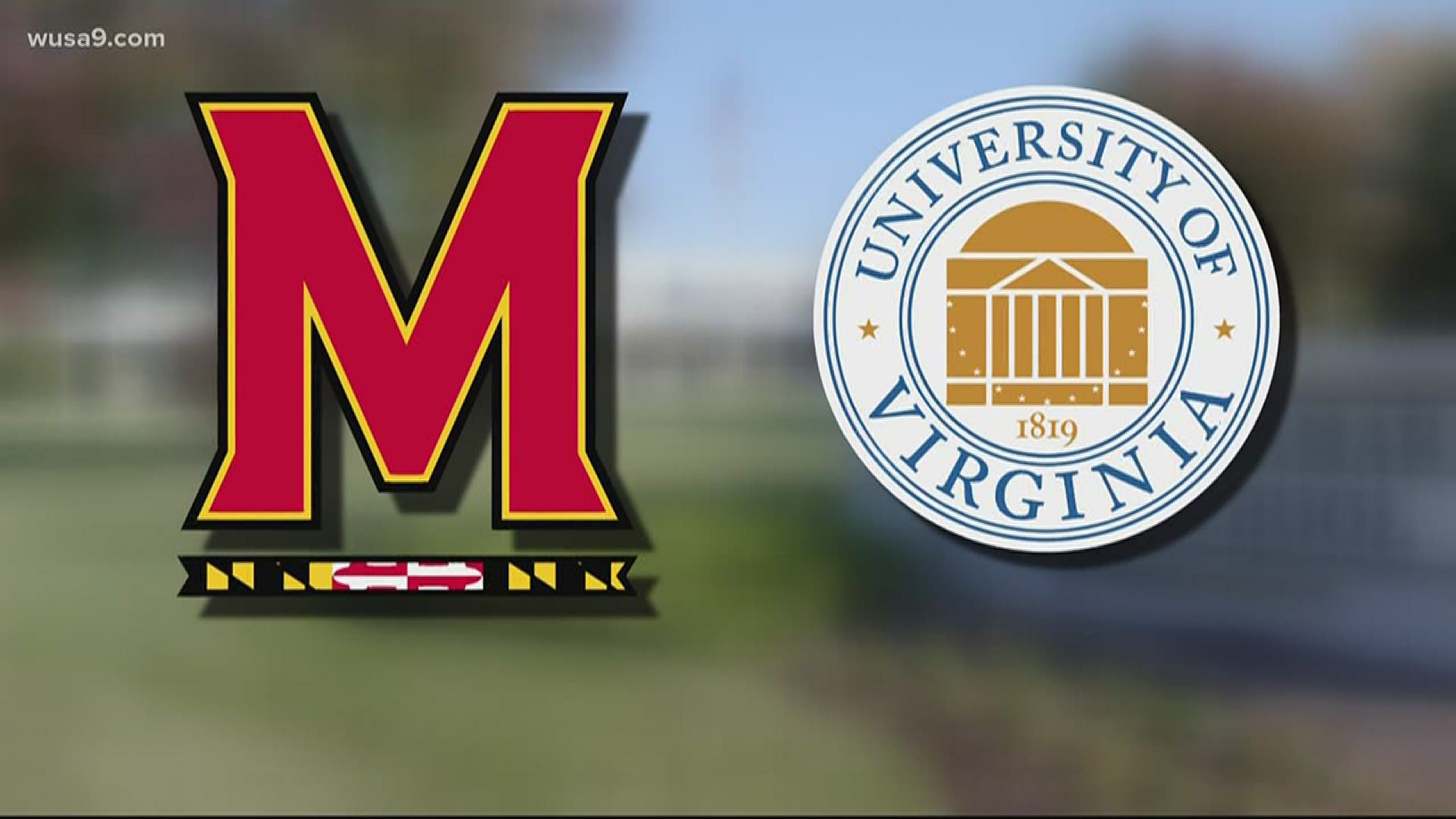DALLAS — In the span of one afternoon, the Big 12 all but decided to change the very nature of its conference and shake up the entire college sports universe for the foreseeable future.
The conference of One True Champion is about to undergo One True Expansion.
![NCAA Football: Big 12 Media Day [image : 87322296]](http://www.gannett-cdn.com/media/2016/07/19/USATODAY/USATODAY/636045589190983939-USATSI-9389979.jpg)
Following a meeting of Big 12 presidents here on Tuesday, Oklahoma President David Boren announced that Commissioner Bob Bowlsby has been authorized to engage schools interested in joining the Big 12 and said the league could grow by as many as four teams.
![Big 12 will start looking at candidates for expansion [oembed : 87322022] [oembed : 87322022] [oembed : 87322022] [oembed : 87322022]](/Portals/_default/Skins/PrestoLegacy/CommonCss/images/smartembed.png)
While it technically means the Big 12 could still backtrack and stay at 10 members, it is now clear the presidents have every intention of getting bigger — and perhaps as soon as the 2017 football season.
“It’s a statement we want to move forward,” Boren said.
Though the Big 12 has had an ongoing internal battle over whether to expand ever since Dec. 7, 2014 — the day the league was left out of the inaugural College Football Playoff — the one overriding factor was the quality of programs available to expand.
While many in the league were open to or simply ambivalent about expansion in theory, the Big 12 did not have the strength to lure other schools currently in peer leagues. For more than a year, the question of whether the Big 12 could add members from outside the Power Five without diluting the league’s overall product and brand essentially had stalled any serious momentum on getting bigger. And when the NCAA approved a rule change this year allowing the Big 12 to hold a football championship game with fewer than 12 teams, there did not appear to be any financial or competitive reason for the league to get bigger.
![Jim Grobe clarifies remarks on culture at Baylor: We have quality kids [oembed : 87322148] [oembed : 87322148] [oembed : 87322148] [oembed : 87322148]](/Portals/_default/Skins/PrestoLegacy/CommonCss/images/smartembed.png)
But the momentum changed Monday when ESPN reported that the ACC would soon announce a partnership on a new cable network and had agreed to a so-called “grant of rights” locking in its members for the next 20 years.
That means more money for the ACC, more stability and more of a threat to the Big 12 should another league — say, the Big Ten — consider expansion again the next decade. The Big 12 could do nothing, certainly, but it decided Tuesday that the risk of falling behind without expansion is now greater than the short-term issues new members might create.
While there are no ready-made members that will boost the Big 12 now — otherwise they’d have already gotten in — the league is going to swallow hard and use its brand to build up a program from outside the power structure.
“We’re looking for members that will grow over time as we grow and bring stability and have a high top end,” Bowlsby said.
![Big 12's Bob Bowlsby talks tough on Baylor because that's all he can do [oembed : 87322064] [oembed : 87322064] [oembed : 87322064] [oembed : 87322064]](/Portals/_default/Skins/PrestoLegacy/CommonCss/images/smartembed.png)
And, of course, there’s also the money factor.
According to the Big 12’s television agreements, the per-school payout for television rights will not change regardless of its membership composition. In other words, if the Big 12 adds four schools, ESPN and Fox are contractually obligated to increase their total payouts by 40%.
But new members will not receive full shares immediately, and Boren made clear that schools will be welcome to submit proposals for what their entry to the league would look like, including financially.
In the meantime, this movement toward expansion is going to ripple throughout the rest of the college sports world. One well-connected person in the industry, who spoke on the condition of anonymity due to the sensitivity of the subject, said athletics directors and presidents won’t sleep until the decision is over because jobs will literally be on the line.
This represents potentially the last major realignment for quite some time, and the opportunity for schools outside the Power Five to jump the fence — particularly as the financial gap has widened — is going to create tremendous pressure on administrators.
It is also going to shake up several conferences. It’s possible the American Athletic Conference, which has been the top league outside the Power Five, could lose multiple teams. The dominoes could fall all the way down to a school such as UMass, which currently does not have a home for football and is playing an independent schedule while waiting for a spot in a Football Bowl Subdivision league to open up.
And, according to Bowlsby, the process could move quickly enough that a September vote on how many and which schools to add isn’t out of the question.
“I don’t know I’m prepared to put a time frame on it right now,” he said. “We intend to be active very soon.”
In reality, the Big 12 won’t have to do much vetting on the primary candidates. As expansion talk has bubbled, schools have been pitching themselves to the Big 12, including individual presidents, for months.
![Takeaways: What we learned at Big 12 Media Days [oembed : 87322084] [oembed : 87322084] [oembed : 87322084] [oembed : 87322084]](/Portals/_default/Skins/PrestoLegacy/CommonCss/images/smartembed.png)
So what is the Big 12 looking for? Boren mentioned all the typical factors including quality of overall athletic program, fan base, television market and academic reputation. The immediate sense within the industry is that the race is wide open because the Big 12 could take its expansion in any number of directions.
Is it four or two? East or West? Do they make a play in Florida for recruiting purposes? How does BYU factor in, given its prohibition on competing on Sundays? Nothing is certain, but here are some obvious directions for the Big 12 to look at in the coming weeks (listed in alphabetical order:
Boise State: If this were a merit-based discussion on winning football over the last decade, the Broncos would win in a landslide. But Boise isn’t an attractive market, it’s geographically remote for most of the Big 12 and the academic reputation of the school doesn’t hep.
BYU: Has a strong brand, the best football history of any available school and national following. But BYU would create another geographic island unless it’s paired with another school in the West. Not playing on Sunday is an issue in lots of sports besides football, although football only expansion is on the table.
Central Florida: This is a pure upside play, especially since its run of football success came to a screeching halt last year. Overall athletic department has underperformed, and its fan base is still not as strong as you’d like despite growing enrollment. Provides Orlando TV market and Florida recruiting potential.
Cincinnati: Former president Santa Ono spent a significant amount of time courting the Big 12. Former Big East member has lots of pluses and has been nationally competitive in football and basketball. Would provide a geographic partner for West Virginia.
Colorado State: The university profile fits with the Iowa States and Kansas States of the world, but does the athletic program? Colorado State hasn’t been relevant nationally in much of anything for a long time, but it’s building a new football stadium. Does geography here help or hurt?
Connecticut: Obviously the pedigree of its men's and women's basketball programs would be a big plus for the Big 12. How much does basketball matter in this decision? Does a foothold in New England or New York move the needle for a Texas-based league? If you thought Morgantown was a pain, sending non-revenue sports from Texas to Storrs is even less ideal.
Houston: Made a major impression in football last year by winning the Peach Bowl and paying coach Tom Herman $3 million per year to stay. Has aggressively worked on facilities and fundraising. The major hurdle is whether Texas, TCU, Texas Tech, Baylor etc., want to elevate another in-state school and add a potential recruiting competitor.
Memphis: Would plant a flag in SEC country, a solid TV market and fertile recruiting area. Has had recent (though not sustained) football success, a national basketball brand and the trump card: Its affiliation with FedEx, which would like to be a major sponsor for the Big 12 if Memphis is included. Lack of academic heft may be a negative.
South Florida: Has never really fulfilled its potential, but like Central Florida it’s in a major market. If the Big 12 doesn’t think adding the fourth and fifth most popular programs in Florida would significantly impact its recruiting in the state, it should probably look elsewhere.
Tulane: Here’s an interesting wild card. Why? Academics and market. New Orleans fits geographically, and the Tulane reputation could help offset another choice with lesser academic credentials. Plus, Bowlsby and current Tulane athletics director Troy Dannen are close as they both started their careers at Northern Iowa.
![Highlights from Big 12 Media Days [gallery : 87245934]](http://www.gannett-cdn.com/-mm-/16677500da5f561e808bb82796908d9290606046/c=311-0-3091-2376/local/-/media/2016/07/19/USATODAY/USATODAY/636045338160928998-USATSI-9391889.jpg)


